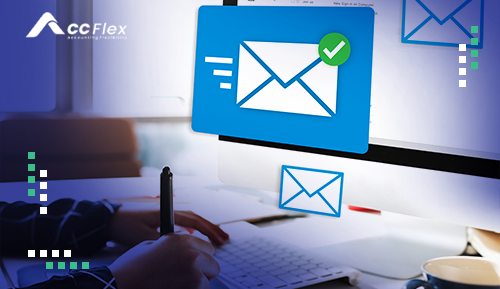
What a lot of people don't know about the warehouse management term, and the warehouse term is related to, for them, is that place that contains many items that we use only when needed, but such a narrow perspective and misconception of warehouse management are the least to know about warehouse management, and Inventory Management Software is a great world of management science that we will learn about in this article to see how warehouses are managed within companies, but we must agree at the outset that “warehouse management systems” has been significantly affected by modern technology systems and Inventory Management Software that have caused a paradigm shift in warehouse management, it has switched it from slow and inaccuracy traditional systems to speed and accuracy of input the inventory data as well as the real-time reporting, to learn more about inventory management techniques, we must first know what does warehouse mean.
Warehouse Management
A warehouse is a building, or a part of one, in which ensuring the safety of the items and matching them with the purchase order and then the transaction (receipt and issue) of the company's items (products) whether for production, trade, or storage purposes, and the types and nature of the warehouses vary according to their intended purpose.
Warehouses types by ownership (corporate-owned warehouses - rented warehouses)
In terms of the items (the type of the inventory materials) (raw material warehouses, work-in-progress warehouses, finished product warehouses) also by centrality (main warehouse, regional warehouse, sub-warehouse)
In terms of purpose (supplies warehouses, spare parts warehouses, packaging warehouses, fuel warehouses, financial and administrative records warehouses, inks and printing papers warehouses, asset warehouses, etc.)
After learning about the warehouse, we need to know what does warehouse management mean
Warehouse management is the responsible management of the buildings and warehouses, as well as the preservation of the inventory materials from damage, ensuring their safety and monitoring the work processes in the warehouse.
Tasks of Warehouse Management
The warehouse management has several tasks to achieve its goal of preserving and ensuring the safety of the inventory materials (in the warehouse) to achieve this, it:
1- Ensuring the warehouse is split and configured to fit the inventory materials in and checking that industrial security requirements are applied (safety of electrical sources and absence of hazardous wiring, presence of fire extinguishing systems, presence of smoke detectors, presence of surveillance cameras, wearing warehouse workers industrial safety uniform).
2- The warehouse is free of moisture or harmful sunlight for inventory items - insects - and also a need for suitable ventilation and temperature to keep inventory items.
3- Ensuring that the storage spaces and corridors are available to facilitate the work of warehouse workers.
4- Ensuring that efficient inventory management systems (record receipt of goods/items at warehouses in receipt note vouchers - record the issuer from the warehouses in issue vouchers) are followed, ensuring that more than one copy of the vouchers is available to provide the finance department with a copy of them.
5- The need to code the items by putting a similar serial number for the item (barcode) makes it easy to know all the proprieties of this item, as well as putting it in the designated place and warehouse organization, so that the product can be easily accessed through its code.
6- Determining the warehouses locations in accordance with the nature of the activity, the presence of raw materials warehouses near production lines and the presence of finished product warehouses near the markets, the presence of financial and administrative records warehouses near the department, and so on.
7- Tracking time and attendance of workers and employees of warehouses and training them on the tasks of warehouse management.
This is what the warehouse management does of tasks and to achieve the objectives of the warehouse management, so we find the other way to get the best of the inventory work done and achieve the company's goals.
Inventory Management & Inventory Control
It is all the processes of monitoring inventory, reviewing inventory balances, issue vouchers, receipt note vouchers, actual inventory balance and compare it with the book balance (stocktaking) to determine the deficit or increase in the items, as well as to provide the company's senior management and different departments of the company with the reports that needs.
Functions of Inventory Control
Inventory control functions are part of the company's finance department business and are mainly the result of the collaboration between the inventory management and finance department; no of either department can work without others, inventory control reports are the result of data from warehouse management, perhaps the most important functions of inventory control are:
1- Recording and reviewing the issues vouchers and receipt note vouchers and match them with purchase requisitions/ purchase orders.
2- Performing stocktaking, which is intended to review the actual inventory balance and match it with the book balance.
3- Determining the appropriate and applicable physical inventory method for the company's activity where the physical inventory is divided into two types
- Periodic inventory: The stocktaking is performed once at the end of the fiscal year and is required therefore the company activity must be stopped and production lines to ensure the safety of this type of physical inventory.
- Perpetual inventory: The stocktaking that is continually performed during the fiscal period and therefore does not require stopped the activity and the selection of the appropriate type of physical inventory for the company is due to depending on the nature of the company's activity and policies.
4- Setting the reorder point (the lowest number of units allowed in the warehouse of the item and when the item balance is less than this number must be immediate repurchase so production does not disrepute) and setting the maximum quantity (the maximum number of units allowed in the warehouse of the item and when the number exceeds this limit occurs a stagnation of the item and is considered idle funds causing losses to the company).
5- Selecting the inventory valuation method that is being worked in the financial statements, there are several methods of inventory valuation
First-In, First-Out (FIFO)
In this method, the items are priced in the issue voucher
A- The First-In, First-Out (FIFO) method of inventory valuation accounting is based on the item price in the first receipt note voucher that created (the oldest price of the item is calculated first), and this method is affected by the difficulty of applying it in the practical reality, especially in the period of economic fluctuations.
Last-In, First-Out (LIFO)
In this method, the items are priced in the voucher
B- The Last-in First-out (LIFO) method of inventory valuation is based on (the issuing according to the last receipt note voucher that created (the most recent price of the item is calculated first) and this method is more prevalent in the practical reality.
C- The weighted average cost (WAC) method of inventory valuation is based on calculating the average price for items is according to its price fluctuations and this method is the most fair and appropriate method of preparing the financial statements.
6- Providing the company's different departments with the inventory reports as providing the production department with the raw material balance, for example, for planning the production process - or providing the procurement department with an inventory balance of a particular item until the procurement department determines whether the item is purchased again or issued from the warehouse, the sales department is provided with a specific item balance for the customer's order processing, and so on.
After talking about inventory management and inventory control, we should mention that technology has been very important in bringing about a breakthrough in warehouse management systems and the modern ERP system.
Inventory Management Software Features
Having an Inventory Management Software within the company means that the company are moving in the right direction, our world today with many companies and activities that vary and certainly do millions of inventory items cannot be managed and controlled by traditional paper-based systems that not exactly fit what we see as modern technology in our lives, imagine a company with its headquarters in United States of America (USA) and a branch in Egypt how can the inventory balance be reviewed and how planning and monitoring is made production, it is very difficult to have an Inventory Management Software that makes the company operate as a single system and allows the company as a whole to obtain the necessary inventory reports for them easily and in a timely manner so that we can learn about the advantages of Inventory Management Software, some of which can be mentioned as follows:
1- Easy to creating electronic issue vouchers and receipt note vouchers for all the company's products with serial numbers generated by the system, and the inventory control can display them instantly as soon as they are entered by the storekeeper, in order to facilitate the task of inventory control and help in producing accurate reports on the inventory balance.
2- Creating the item card from Inventory Management Software and selecting all the properties of the item (item code - item unit of measure- description- alternative unit of measure- alternative items- the warehouse - item price- selecting the GL account in the chart of accounts ...).
3- The ability to add and issue the inventory items by using the scanner through the presence of a barcode (serial number) on the item that the scanner can read, and Inventory Management Software adds or issues the item immediately, as seen in the hypermarkets and companies’ warehouses.
4- Linking the warehouses with each other, so the Cairo branch warehouse can display the items in the warehouses of the Alexandria branch, for example, instantly, and it can also know the balance and create an inventory transfer when needed.
5- Fast and easy to create a Material Issue Request for all departments, if it was a construction company, and the site needs construction materials (cement - sand - steel ...) and there is no in the site warehouse can create a request from Inventory Management Software and the storekeeper issuing the items.
6- Linking between the warehouse and finance department, when the storekeeper issues or adds items immediately, GL accounts are affected because the impact of these items on many accounts (such as cost of goods sold - accounts payable - inventory - purchase returns and allowances - .......).
7- The ease and accuracy of displaying the inventory’s balance, as soon as the inventory controller displays the inventory’s balance immediately, the balance appears for any warehouse and at any date he desires, and thus the ease of performing stocktaking.
8- Ease and accuracy of production planning, the production department can easily display the raw materials inventory balance through the reports provided by Inventory Management Software, it can determine the appropriate production quantity as well as purchase requisitions during the next period, dates of supply and production planning in a way that reduces waste and losses and reduces costs to the lowest level and profit maximization of the company.
9- Linking between the warehouse and procurement department, in the modern concept of management, the warehouse and procurement department is seen as one department (materials management) and in order for the purchase to be made properly, reports on inventory balances are required, and the accounts payable balance cannot be calculated except with the purchase requisition and also not the purchase order can be closed and the supply confirmed only by supplying all the goods contained in the purchase order to the warehouses and all these reports can be provided easily and accurately through Inventory Management Software.
10- Helping the senior management making decisions (providing Inventory Turnover Report, Fast and Non-Moving Inventory Report, Stock-take Report, Item Price List Report, etc.) all of these are reports that help the senior management to take the necessary procedures regarding holding inventory or not, investing in the fast-moving items and importing quantities of them, as well as searching for the best suppliers of items etc. of reports provided by Inventory Management Software in a very timely and accurate manner, which contributes to decision-making.
Modern Warehouse Management Techniques
The world never stops keeping up with the evolution of warehouses, not only the backbone of production, but also the backbone of the company as a whole; therefore, the countries are constantly developing the warehouse management systems, the most important of these methods in the modern warehouse management is the (Kaizen Method - ISO Systems), which has contributed significantly to the development and improvement of modern warehouse management techniques.
Kaizen Method: It is a Japanese term that means the continuous improvement of the company in the business environment, in the Kaizen concept, no day passes over the company without making improvements even if they are small, the Kaizen philosophy depends on the continuous improvement of the company management system (warehouse management) at the lowest possible costs and the modern warehouse management method (Kaizen) is based on several principles which are:
1- No day passes over the company without improvements in all departments and branches of the company.
2- There is nothing that cannot be improved and developed. Everything is subject to improvement and development.
3- Rather than criticize, provide suggestions and alternatives for solving problems.
4- The principle of quality before profit and build customer confidence before obtaining profits.
The ISO systems: Which adopt the continuous quality improvement and improving the business environment and it has an organization that certifications are given to companies that implement and adhere to their principles of management.
It's worth noting that the continuous improvement to the warehouse is a must and all companies are now they are looking for the best to increase their competitiveness and building the customer confidence by providing high-quality products at the lowest possible cost, this is done only by managing warehouses, inventory management a very efficient, accurate and fast, and reporting very quickly and accurately for all its users, and this is done only by having a suitable Inventory Management Software for the company that offers all solutions in this regard.







Add a comment